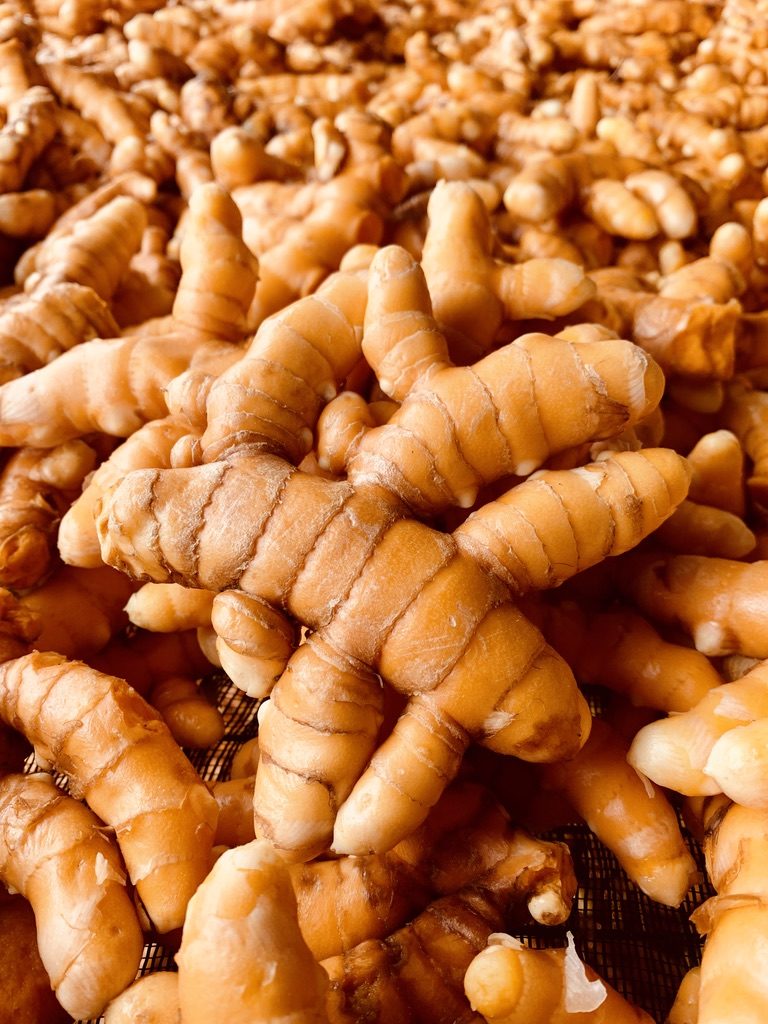
Organic Turmeric from Kauai
At our family farm on Kauai’s lush North Shore, where we cultivate premium, certified organic turmeric—also known as ‘olena in Hawaiian. Grown in mineral-rich volcanic soil and hand-harvested with care, our turmeric is perfect for chefs, market owners, supplement manufacturers, and wellness enthusiasts seeking the highest quality.
Certified Organic, Food Safe & Kosher Certified
We are committed to producing top-quality turmeric that meets the highest industry standards. Our farm is:
✔ USDA Certified Organic by Where Food Comes From Organic
✔ Food Safety Certified by Primus Labs
✔ Kosher Certified by OK Kosher
These certifications reflect our dedication to sustainable farming and food safety, ensuring you receive turmeric of the purest quality.
Why Choose Our Kauai-Grown Turmeric?
Our turmeric thrives in Kauai’s fertile volcanic soil, abundant sunshine, and clean water—an ideal environment for this tropical plant. Planted in the spring and harvested by hand, our turmeric is carefully selected to ensure optimal freshness, potency, and flavor.
Fresh Yellow Turmeric – ‘Olena Variety
Our vibrant yellow turmeric, with its deep orange interior, earthy flavor, and peppery aroma, is perfect for:
✔ Culinary dishes—curries, soups, and sauces
✔ Wellness products—teas, tonics, and supplements
✔ Natural food coloring and dye applications
Red Turmeric – A Rare Hawaiian Variety
In addition to our popular yellow turmeric, we offer Hawaiian red turmeric, a rare and potent variety with a distinctive reddish hue and slightly bolder flavor. This unique turmeric is ideal for:
✔ Medicinal teas, tinctures, and wellness blends
✔ Skincare and topical treatments
✔ Dishes that require a deeper, richer turmeric taste
Retail & Wholesale Options
We offer both fresh yellow and red turmeric in retail sizes (1–25 lbs) and bulk wholesale orders. Contact us at office@kauaiorganicfarms.com for wholesale inquiries.
Premium Turmeric Powder
Looking for convenience? Try our premium turmeric powder, perfect for cooking, baking, and adding vibrant color to any dish. Order online or contact us for bulk purchases over 10 lbs.
The Rich History & Benefits of Turmeric
A revered plant with a long history, turmeric (Curcuma longa) is part of the ginger family and was first brought to Hawaii by Polynesian voyagers. Traditionally used in Hawaiian and global herbal medicine, turmeric is known for its:
✔ Anti-inflammatory & antioxidant properties
✔ Support for immune health & digestion
✔ Culinary versatility in global cuisines
Experience the finest organic turmeric, grown with Aloha on Kauai’s North Shore.